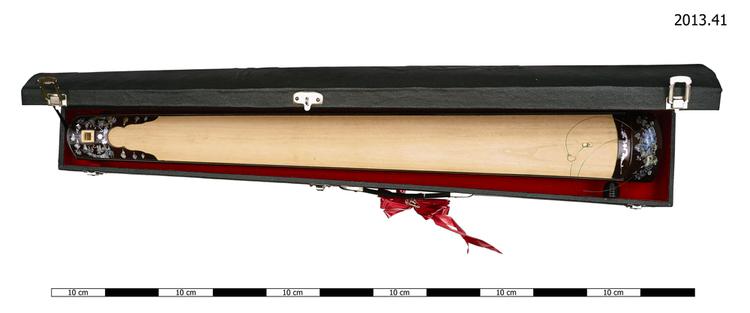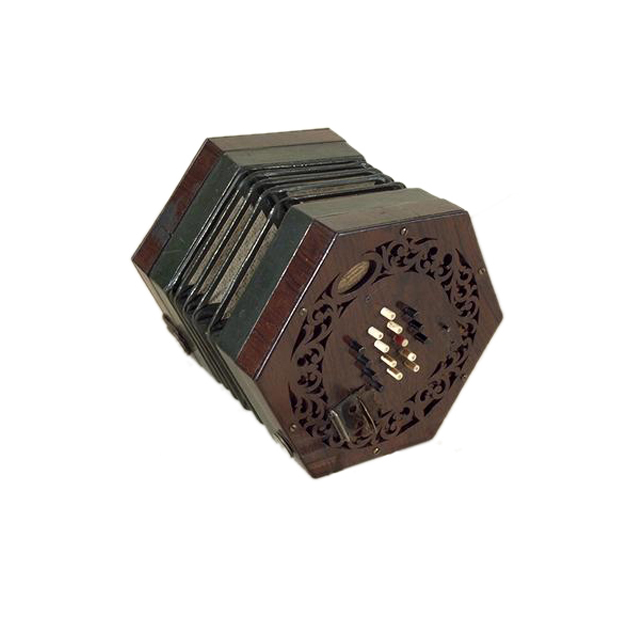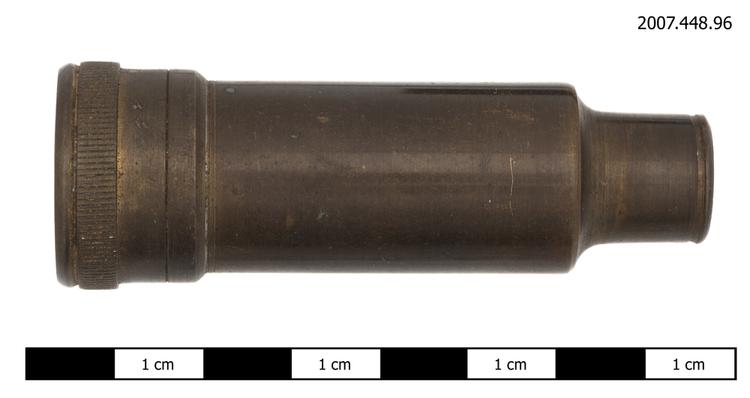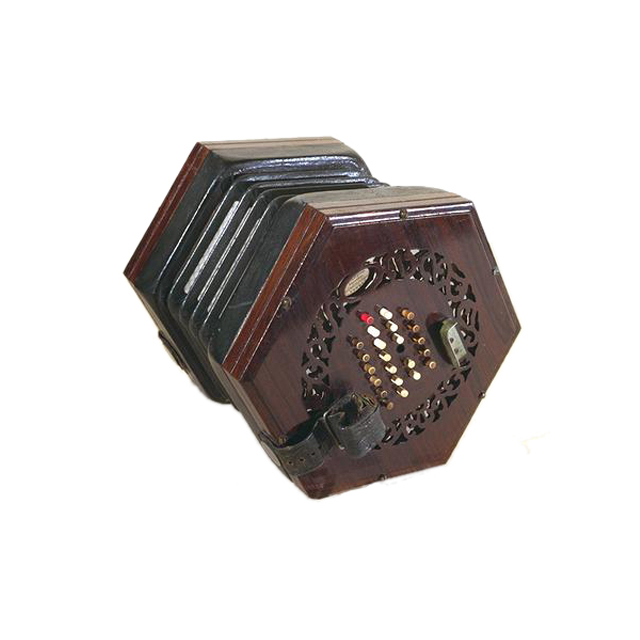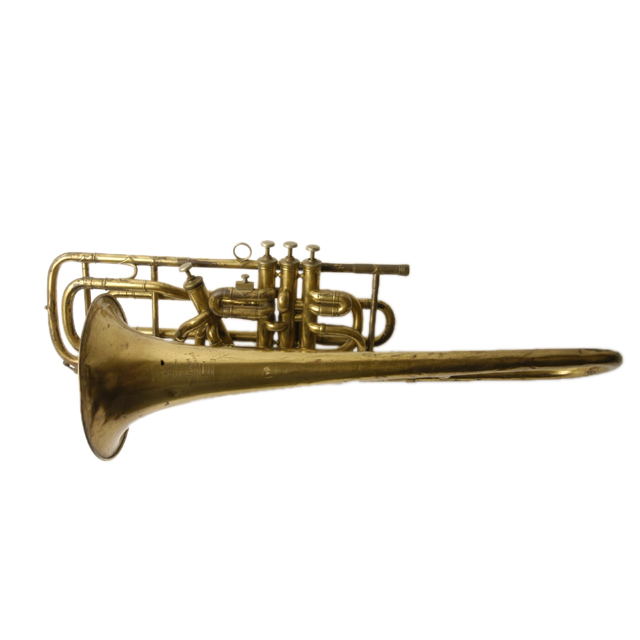
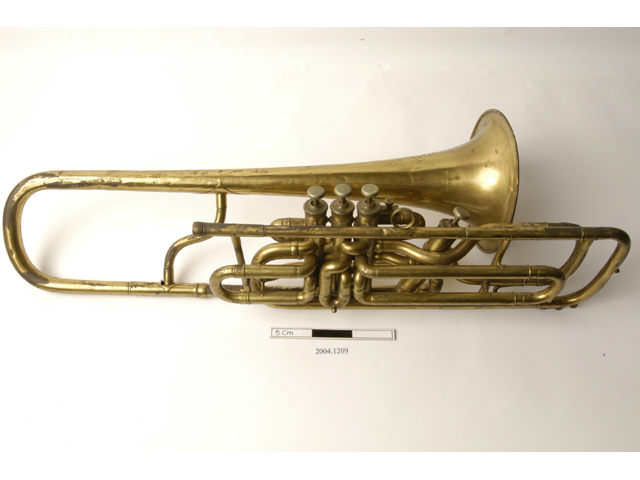
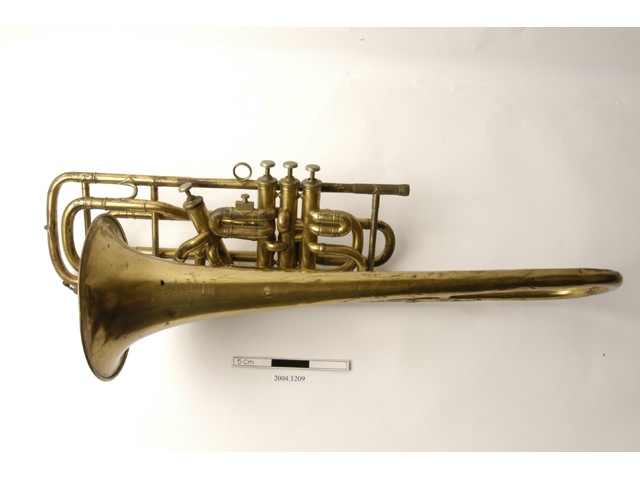
Bass valve trombone in B flat. Short model. Brass tubing with thick lacquer coating. Four Périnet valves, three positioned in-line with finger buttons over mouthpipe, which is fitted with an adjacent little finger ring, fourth valve set at an angle for the left hand. Valves configured as a Blaikley compensating system. Valve and bell sections connected with inertia fitting. Swan necked bell stay. Water key on lower bow. Socket for music card holder on secondary loop of third valve. Mouthpiece missing. Bell stamped: TRADEMARK/DISTIN/Patent Light Valve/BOOSEY & Co./MAKERS/295 REGENT St./LONDON/26812; Second valve casing stamped: DISTIN/LONDON/MAKER/16563; Valve casings also stamped 1,2,3,4 respectively.
This instrument was displayed at the Royal Military exhibition at Chelsea Barracks in 1891. The exhibition catalogue, by Major C. R. Day states: 'This instrument was designed by Mr D. J. Blaikley and made as an experiment in 1874. The essential difference between the valve system employed, and any other previously designed on a "compensating" principle, lies in the reduction of the number of passages through the valves.' This is the earliest surviving example of Blaikley's successful four valve compensating system. The instrument was made while the Boosey Company were still using the Distin name, having bought the Distin Company and factory in 1868. In this period, instruments were often made by the Distin subsidiary and then sold to Boosey. As a result of this arrangement, the trombone has had two serial numbers; the original Distin number was 26812 (which is stamped on the bell), but it was later given the Boosey number 14326. The instrument also has the last known surviving piston cluster stamped with the elliptical Distin emblem.



